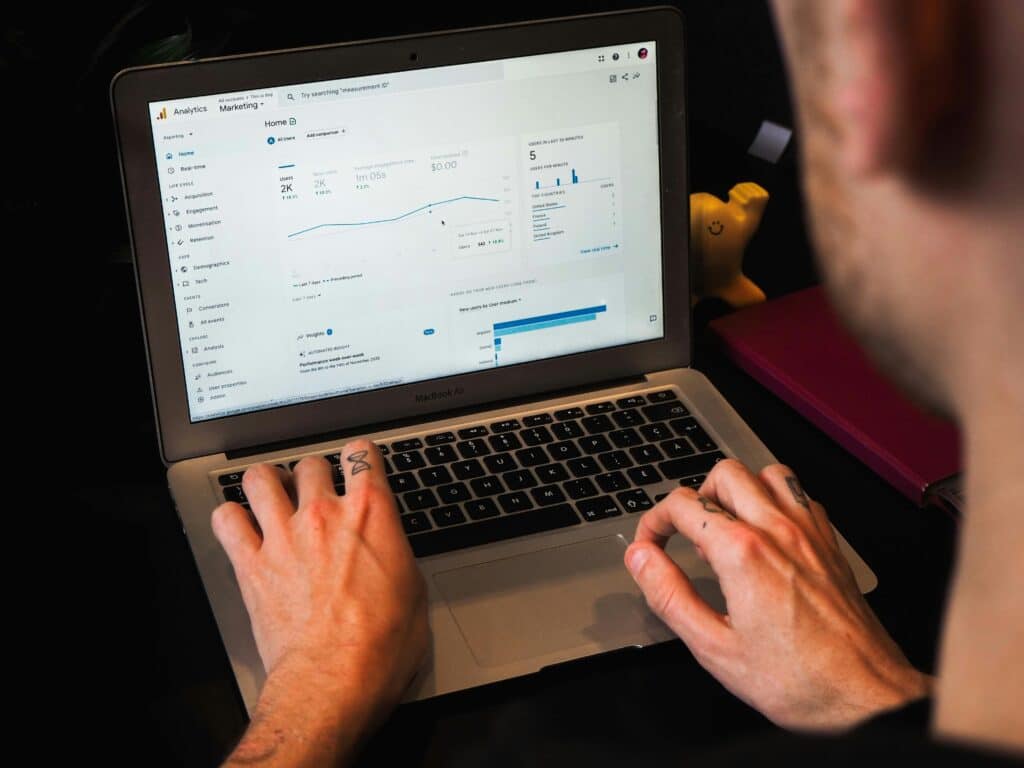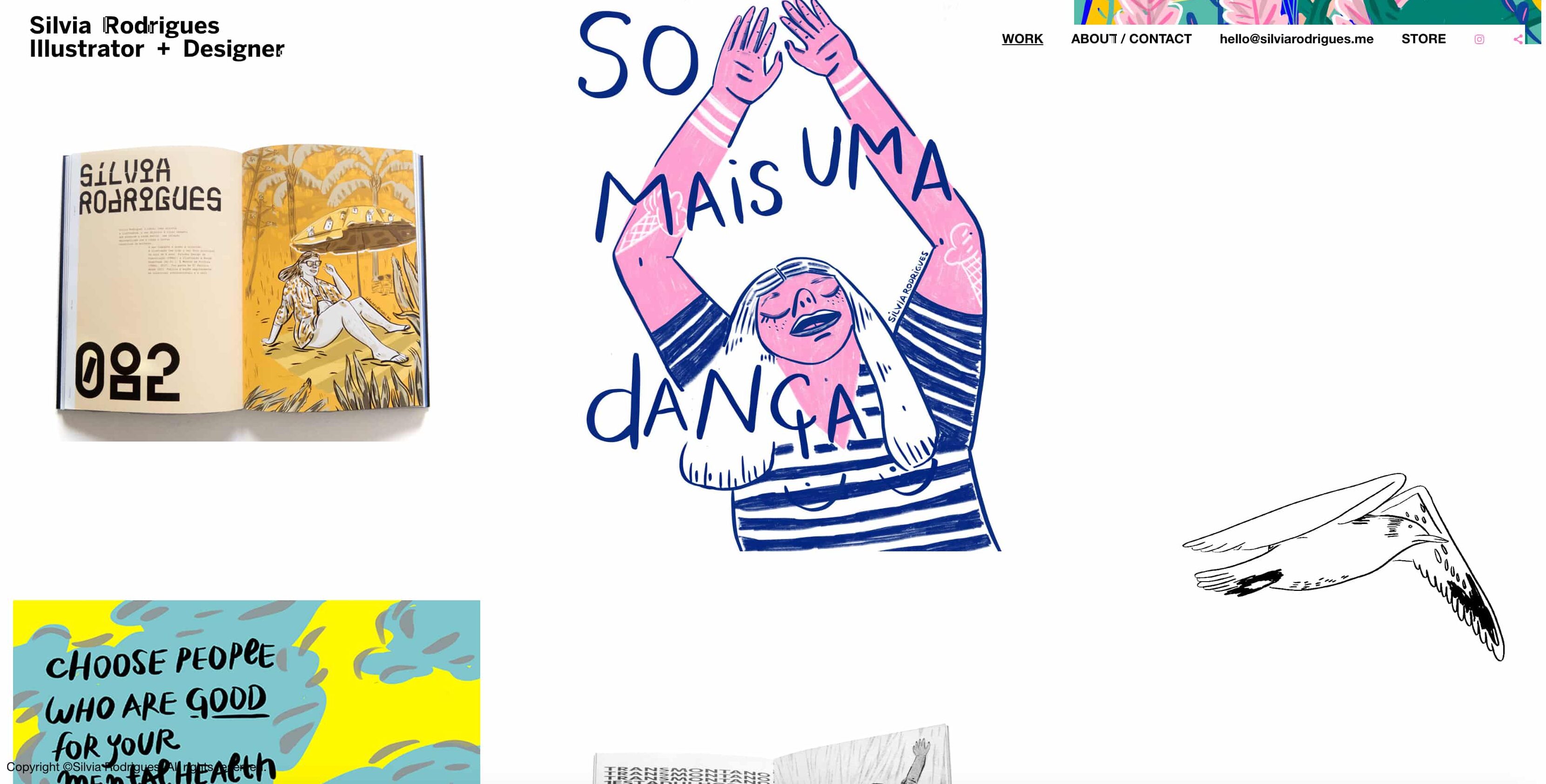Fotografen wissen, wie wichtig der Bruchteil einer Sekunde ist, wenn sie ein Foto machen. Genauso schnell ist der erste Eindruck von deiner Arbeit. Du hast nur ein paar kostbare Augenblicke, um dein Publikum zu begeistern. In Zeiten, in denen die Aufmerksamkeitsspanne kürzer ist als je zuvor und wir uns nach Unmittelbarkeit sehnen, kann es für Kunden, Kooperationspartner und Kuratoren den Unterschied ausmachen, ob deine Website mit den richtigen Begriffen auf der ersten Seite der Suchergebnisse bei Google erscheint, was wiederum bessere Chancen für Arbeit, Umsatz und Bekanntheit bedeutet.
Deshalb sollte SEO bei der Erstellung deiner Website ganz oben auf deiner Liste stehen. Suchmaschinenoptimierung (Search Engine Optimization, SEO) ist ein wichtiges Instrument, um dein Online-Ergebnis zu maximieren. Fotografie-Portfolio und verbessere dein Google-Ranking. Dieses Tool ist eine effektive und kostengünstige Möglichkeit, dein Unternehmen zu verbessern und dein Online-Portfolio aus der Masse der Websites hervorzuheben.
Als FotografDeshalb haben wir einen umfassenden Leitfaden zu allen Fragen der Suchmaschinenoptimierung erstellt, um dir die Grundlagen zu vermitteln und deine Website zu etablieren.
Indexierung und Ranking für Websites aufschlüsseln
Es ist wichtig zu verstehen, wie Suchmaschinen wie Google Websites indexieren und einstufen. Wenn du eine Website erstellst und sie ins Internet hochlädst, erkennen Suchmaschinen deine Website und fügen sie ihrer Datenbank mit allen Websites hinzu, die sie in ihrer Suchmaschine speichern. Dort werden die Seiten nach den sichtbaren und verborgenen Informationen auf den Seiten sortiert und kategorisiert.
Die Indexierung erfolgt automatisch und ist in der Regel einige Tage nach der Veröffentlichung deiner Website abgeschlossen. Sobald deine Website indiziert ist, wird sie in der Google-Suche angezeigt. Bei Aktualisierungen und Änderungen an deiner Website wird Google deine Website crawlen und diese Unterschiede und Ergänzungen analysieren und deine Website in ihrem Index entsprechend aktualisieren.
Um zu überprüfen, ob deine Website indexiert wurde, kannst du eine site:search durchführen. Gehe zu Google.com und gib "site:yourdomain.com" ein (entferne die Anführungszeichen und ersetze "your domain" durch die Domain deiner Website).
Sobald deine Website indiziert ist, kann sie gerankt werden. Die Bewertung deiner Website durch Google beeinflusst, wie weit oben sie in den Ergebnissen erscheint, wenn jemand nach deinem Namen und deiner Arbeit sucht. Über 200 verschiedene Faktoren werden für die Bewertung deiner Website herangezogen, darunter die Ähnlichkeit zwischen deiner Website und anderen Websites, die Ladegeschwindigkeit deiner Seite, ob deine Website mobilfreundlich ist und die Qualität des Inhalts deiner Website.
Wenn du den Rahmen der Indexierung und die Faktoren verstehst, die zu deinem Ranking beitragen, kannst du deine Sichtbarkeit erhöhen. Sehen wir uns an, wie du einen der wichtigsten Rankingfaktoren nutzen kannst, den Suchmaschinen wie Google verwenden: SEO-Schlüsselwörter.

In ein paar Worten: SEO Keywords
SEO-Schlüsselwörter sind einzelne Wörter oder Phrasen, die ein Besucher in eine Suchmaschine eingibt, wenn er nach Seiten und Inhalten sucht, die mit dir und deiner Arbeit zu tun haben. Schlüsselwörter werden manchmal auch als "Fokuswörter" oder "Schlüsselsuchbegriffe" bezeichnet.
Identifiziere SEO-Keywords speziell für Fotografen
Plane deine Schlüsselwörter, indem du dir überlegst, wie jemand versuchen könnte, dich, Informationen über deine Arbeit und deine Website zu finden. Die Wörter sollten mehr als nur deine Branche beinhalten, sie sollten dein Spezialgebiet oder deinen Schwerpunkt beschreiben und - besonders wichtig für kommerzielle Arbeit - deinen Standort eingrenzen. Wenn du die Art der Produkte oder Dienstleistungen, die du deinen Kunden anbietest, mit einbeziehst, kannst du deine Reichweite mit den Ergebnissen für präzise Angebote erhöhen. Erstelle eine Liste mit SEO-Schlüsselwörtern, die du auf deiner Website verwenden möchtest, wobei du insgesamt etwa 10-15 anstrebst.
Denke bei den Schlüsselwörtern in Stufen oder Ebenen. Gehe von grundlegenden Begriffen bis hin zu spezifischen und spezialisierten Begriffen, um sicherzustellen, dass du ein breites Spektrum abdeckst. Um dich zu orientieren, solltest du bei deinen Schlüsselwörtern und Phrasen drei Fragen beantworten:
- Was für eine Art von Arbeit verrichte ich?
- Wie nennt man eine Person, die das tut, was ich tue?
- Wo arbeite ich?
Du kannst zum Beispiel grundlegende Schlüsselwörter wie "Fotograf", "Fotografie" und "Bilder" verwenden. Dann kannst du spezifische Schlüsselwörter hinzufügen wie "Landschaftsfotografie", "Porträtfotografie" oder "Modefotografie". Wenn du Modefotografie-SEO betreibst, kannst du spezifische Keywords wie "redaktionelle Porträts" oder "Street Fashion Photography" verwenden.
Wenn du in Zusammenarbeit mit Kunden arbeitest, gib deinen Bundesstaat oder deine Stadt an, z. B. "Toronto", "Kalifornien" oder dein Land, wenn du für deine Arbeit reisen kannst. Die wichtigsten Dienstleistungen, die du anbietest, wie z. B. "Headshot-Fotografie", "Vermietung von Fotostudios" oder "redaktionelle Produktfotografie" werden die Aufmerksamkeit von Besuchern erregen, die nach bestimmten Ressourcen oder Leistungen suchen.
Hinzufügen von SEO-Schlüsselwörtern zu deiner Fotografie-Website
Sobald du 10-15 Begriffe identifiziert hast, füge sie strategisch in deine Website ein. Es gibt vier Schlüsselbereiche, auf die du dich bei SEO-Keywords konzentrieren solltest:
Titel der Website
Füge ein Keyword und deinen Ort - oder die nächstgelegene Großstadt - in die Überschriften oder Titel deiner Webseiten ein. Du kannst dies tun, indem du das SEO-Keyword in den Titel deines Blogbeitrags aufnimmst, deinen Ort und "Porträtfotografie" hinzufügst und so den Titel "Wie finde ich die beste Porträtfotografie in Toronto" erstellst.
Du könntest auch einen bestehenden Seitentitel anpassen, um ihn SEO-freundlicher zu gestalten, z.B. "Fotodienstleistungen Toronto" statt nur "Dienstleistungen".
Website-Text und Beschriftungen
Setze ein bis zwei Schlüsselwörter in den Text jeder Seite deiner Website. Baue deine Schlüsselwörter natürlich in den Text ein und verwende sie sowohl in den Überschriften als auch in den Texten. Du kannst zum Beispiel "Modefotograf" statt "Fotograf" in der Kopfzeile verwenden und deinen Standort im Text angeben, um die SEO zu verbessern; Theo ist ein Modefotograf, der in London lebt und arbeitet
Gib für alle Bilder und Inhalte auf deiner Website beschreibende Untertitel an. Wann immer möglich, Beschriftungen hinzufügen für alle Bilder mit einem Suchbegriff, der mit deiner Arbeit zu tun hat, um deine SEO zu verbessern. Du könntest z. B. eine Bildunterschrift wie "Street Fashion Shooting in Tokio" verwenden, um die Art der Fotografie und den Ort genau zu beschreiben.
Website-URLs
Die URLs für die Seiten deiner Website sollten auch ein Hauptkeyword enthalten. Die URL für deinen Blogbeitrag könnte zum Beispiel lauten: "https://www.yourdomainname.com/new-york-fashion-week-street-photography"
Website-Bilder
Im Backend deiner Website bearbeitest du die Dateinamen so, dass sie SEO-Schlüsselwörter enthalten. Benenne sie zum Beispiel statt "photo1.jpg" in "new-york-fashion-week-street-style.jpg" um.
Du solltest auch den Alt-Text für jedes Bild aktualisieren, damit er SEO-Keywords enthält. Alt-Text steht für "alternativer Text" und dient als Backend-Kennung für ein Bild. Du kannst zum Beispiel Alt-Text mit SEO-Keywords wie "Streetstyle-Fotografie in Tokio" oder "New York Fashion Week Tag zwei ____ Laufsteg" verwenden.
Beschränke die Verwendung von SEO-Schlüsselwörtern, um die Qualität zu erhalten
Sei achtsam bei der Verwendung von Schlüsselwörtern und widerstehe dem Drang, sie zu oft zu verwenden, da dies den Inhalt abgehackt und unnatürlich erscheinen lässt. Wenn du zu viele Schlüsselwörter auf eine Seite packst, ohne dich zu konzentrieren, zu erzählen oder Prioritäten zu setzen, kann das dein Ranking verschlechtern und sich negativ auf deine SEO auswirken, da Google deine Seite als Spam oder schlechten Inhalt einstufen könnte.
Schreibe natürlich, aber achte darauf, wie die Suchmaschinen nach dir und deinen Dienstleistungen suchen. Im Zweifelsfall solltest du dich auf ein bis zwei Schlüsselwörter pro Seite beschränken, um deine Website nicht zu überfrachten - Blogbeiträge sind normalerweise die Ausnahme von dieser Regel. Wenn es um SEO geht, ist es oft besser, starke Schlüsselwörter an bestimmten Stellen zu verwenden, als viele schwache Begriffe an beliebigen Stellen. Setze auf Qualität statt Quantität. Google wird dich dafür belohnen.
Verlinkung deiner Website zur Steigerung der SEO-Ergebnisse
Zusätzlich zu den verkehrsfördernden Begriffen kannst du deine Platzierung in den Suchergebnissen verbessern, indem du Links auf deiner Website integrierst. Die Verlinkung mit anderen Websites und Inhalten auf deiner Seite kann dein Google-Ranking verbessern, da du positiv zum Fluss des Internetverkehrs beiträgst.
Interne Links einbinden
Wenn du im Text deiner Website auf Inhalte verweist, z. B. in einem Blogbeitrag, und auf eine andere Website verlinkst, die auf diese Inhalte verweist oder weitere Informationen bereitstellt, stellst du neue Verbindungen zu deiner Arbeit her, die Google indizieren kann. Zusätzliche Indizierung bedeutet, dass du in den Suchergebnissen häufiger und an einer höheren Position auftauchst.
Wenn du ein Keyword als Link verwendest und dich mit einer Seite verbindest, die sich mit diesem Thema/Ort/Ereignis befasst, steigert das deine Page-to-Page-Ergebnisse.
Wenn du auf Seiten mit schlechtem Inhalt weiterleitest, wird dein SEO nur nach unten gezogen. Stelle sicher, dass du den Traffic auf Seiten mit relevanten Bildern und Texten lenkst, die keinen Spam enthalten.
Wenn du z.B. einen Blogbeitrag über Beleuchtungseinstellungen für redaktionelle Modefotografie schreibst, verlinkst du auf einen seriösen Testbericht über Studiobeleuchtung auf einer Ausrüstungs-Website. Wenn du auf deiner Bioseite über deine Verbindung zu einem Künstlerkollektiv schreibst, verlinkst du auf die Website des Künstlerkollektivs.
Wie bei den Schlüsselwörtern solltest du auch bei den internen Verbindungen bescheiden und professionell bleiben und maximal ein bis zwei Links pro Seite setzen.
Erstelle starke Backlinks zu deiner Website
Backlinks leiten Besucher von anderen Websites auf deine Website. Backlinks sind wie eine professionelle Glaubwürdigkeit: Sie zeigen, dass andere Websites für deine Website bürgen. Starke Backlinks von etablierten Websites erhöhen dein Ranking und helfen dir, ein professionelles Netzwerk aufzubauen.
Um starke Backlinks aufzubauen, müssen die Inhalte auf deiner Website verlinkungswürdig sein. Das bedeutet, dass du informative Inhalte auf deiner Seite hast und sie aktuell hältst. Fotografen und Fotografinnen, die an größeren Projekten arbeiten, die eine langsame Erweiterung deiner Website erfordern, können stattdessen auf Online-Features, Publikationen oder Profile verlinken. Wenn du eine Ausstellung hast, ein Stipendium erhalten hast oder eine aufregende neue Partnerschaft mit einem Kunden hast, die du bekannt geben kannst, füge dies zu deinen Info- und/oder Lebenslaufseiten hinzu. Füge deine Website-Domain in die Veröffentlichung oder den Artikel ein, um einen Backlink zu erstellen.
Wenn du Beiträge für Fotoblogs, Publikationen oder Kollektive schreibst, solltest du in deinen Biografien auf deine Website verweisen. Das ist selbstverständlich, aber um das zu unterstreichen, solltest du die Links zu deiner Website in all deinen sozialen Netzwerken gut sichtbar platzieren, um die Aufmerksamkeit zu erhöhen.
Wachse dein Publikum
Mit den benutzerfreundlichen Portfolio- und SEO-Tools kannst du deine Website und die Suchmaschinenergebnisse in wenigen Minuten anpassen.
Qualität für SEO definieren
Google und die künstliche Intelligenz, die einen großen Teil der Suchmaschine steuert, suchen nach qualitativ hochwertigen Inhalten, die den Traffic erhöhen und die Glaubwürdigkeit ihrer eigenen Ergebnisse steigern. Deine Arbeit kann unglaublich gut sein (davon gehen wir aus), aber es sind die technischen Details, für die sich die Roboter am meisten interessieren.
Erleichtere das Navigieren auf deiner Website
Ermuntere die Besucher zum Öffnen und Verweilen auf deiner Website; vereinfache die Navigation und das Layout. Mach sie benutzerfreundlich und intuitiv, mit einer leicht zugänglichen Menüleiste, klickbaren Schaltflächen und übersichtlichen Seiten. Sie sollte auch auf dem Desktop oder auf dem Handy gut aussehen. Apropos Handy und Verweildauer auf der Seite: Längere Seiten mit scrollenden Inhalten können das Interesse der Betrachter/innen wecken. Mit weniger Klicks auf einem mobilen Gerät ist das Scrollen eine vertraute und einfache Geste, die die Frustration verringern kann, wenn man versucht, zu Bildern oder Informationen zu navigieren. Wenn die Besucher/innen auf deiner Homepage landen, sollte ihnen sofort klar sein, worum es auf deiner Website geht und welche Perspektive du in die Branche oder den Diskurs in der Fotografie einbringst. Als erster Eindruck sollte deine Homepage deine besten Arbeiten hervorheben und die Besucher dazu bringen, tiefer in deine Website einzutauchen.
Verbinde deinen Blog und deine Website, um den Traffic zu erhöhen
Anstatt auf eine andere Plattform zu verlinken, integriere Dein Blog in deine Website einbauen, damit du dein SEO-Ranking durch ständig aktualisierte Inhalte verbessern kannst - was uns zum nächsten Punkt bringt: Blogs sind eine großartige Möglichkeit, Einblicke in deinen Prozess und deine Arbeit zu geben, ohne die Formalität eines Statements. Es ist eine authentische Verbindung, die deine Besucher zu dir und deiner Arbeit herstellen können, und eine Möglichkeit für dich, deine Inhalte frisch zu halten und deine Besucher dazu zu bringen, dich wieder zu besuchen. Links zu deinem Blog sollten in der Navigation deiner Website zu finden sein und können ein guter zweiter Link für deine Social Media Accounts sein.
Aktuelle und informative Inhalte einbeziehen
Nicht jeder Fotograf ist auch ein Schriftsteller. Selbst wenn deine Website einfach ist, wird sie gut ranken, wenn sie qualitativ hochwertige Inhalte hat, die Besucher als wertvoll und informativ empfinden. Wenn du mit deinem Webseitentext, so kurz er auch sein mag, informierst und mit den Nutzern in Kontakt trittst, wirst du sicher sein, dass du an der Spitze bleibst. Ähnlich wie bei der Festlegung deiner Schlüsselwörter solltest du dich fragen: Habe ich vermittelt, wer ich bin? Wird das, was ich tue, verstanden? Wenn ich ein Besucher wäre, der nach meiner Arbeit oder meinen Dienstleistungen sucht, wäre ich dann gezwungen, zu handeln?
Erstelle eine ansprechende Meta-Beschreibung für deine Website
Die Meta-Beschreibung, die im hinteren Teil deiner Website eingefügt wird, ist eine Zusammenfassung der Seite, die von den Suchmaschinen zur Indexierung der Seite verwendet wird, also der Text, der in den Suchmaschinenergebnissen unter dem Titel erscheint. Überraschenderweise hat die Meta-Beschreibung keinen direkten Einfluss auf die Suchergebnisse bei Google, also ist sie nicht der richtige Ort, um viele SEO-Schlüsselwörter zu verwenden. Betrachte sie stattdessen als deine Eröffnungszeile, die die Besucher dazu bringt, deine Seite zu öffnen. Der Text sollte 150-160 Zeichen lang sein; fasse dich kurz und fessle die Aufmerksamkeit.
Zum Beispiel: "New Yorker Modefotograf, der sich auf Street- und Editorial-Arbeiten konzentriert und für Model-Portfolios, Designer-Kollektionen und Markenkampagnen gebucht wird."
Google Tools für die Suchmaschinenoptimierung nutzen
Google hat mehrere wichtige Tools für Website-Betreiber entwickelt, die ihnen dabei helfen, ihr SEO-Ranking zu verbessern und qualitativ hochwertige Inhalte im gesamten Internet zu veröffentlichen. Es gibt zwar viele kostenlose SEO-Tools da draußen, Google Suchzentrale, Google Analytics und Google Search Console sind besonders aufschlussreich und können dir helfen, die Leistung deiner Website und die Resonanz deiner Inhalte zu analysieren
Melde dich für ein Google Business Profil an
Wenn du ein kommerzieller, kundenorientierter Fotograf bist, ist eine kostenlose Google Business Profil kann dabei helfen, die Informationen auf deiner Website mit der Google-Suchmaschine und Google Maps zu synchronisieren. Eröffne ein kostenloses Konto und fülle dein Profil aus, in dem du Angaben zu deinem Unternehmen, deinen speziellen Fähigkeiten und deiner Arbeitsweise als Fotograf machst.
Sobald dein GMB-Konto aktiv ist, stellt es sicher, dass deine Website in Google Maps eingetragen wird und du bei der Google Maps-Suche nach Fotografen in deiner Gegend oder deinem Standort weit oben rangierst.
Hinzufügen einer Sitemap zur Google Search Console
Eine Sitemap ist ein Tool, das Google verwendet, um die Inhalte deiner Website besser zu verstehen, sie regelmäßig zu indexieren und ihre Platzierungen zu verbessern.Du kannst die Google Search Console über dein Google-Konto aufrufen. Du musst dann in das Backend deiner Website gehen, um eine Sitemap zu erstellen und sie der Google Search Console hinzuzufügen. Einige Website-Builder, wie z. B. Format, erstellen automatisch eine Sitemap erstellen für dich, um den Prozess zu vereinfachen.
Ermutige Kundenrezensionen auf Google und anderen Plattformen
Kundenrezensionen erhöhen dein Profil als Fotograf, sprechen für deine Glaubwürdigkeit und können dein SEO-Ranking bei Google unterstützen. Wenn du ein kundenorientierter Fotograf bist, solltest du deine Kunden ermutigen, eine Bewertung über deine Arbeit bei Google abzugeben.
SEO mit Google Analytics verfolgen
Nachdem du Schlüsselwörter, Backlinks und Beschreibungen auf deiner Website eingeführt hast, behalte im Auge, wie deine Website durch Google Marketing Plattform um den Erfolg deiner Strategie anhand von Kennzahlen wie Traffic, Seitenaufrufe und Absprungrate zu messen. Wenn du das regelmäßig tust, kannst du die Reaktion analysieren und bei Bedarf anpassen.
Führe SEO-Strategien in dein Portfolio ein
Die Theorie und Strategie hinter SEO zu verstehen, ist der erste Schritt. Jetzt ist es an der Zeit, dein Wissen auf dein Online-Fotoportfolio anzuwenden, damit du mehr Besucher auf deine Website lenkst und in den Suchergebnissen besser platziert wirst. Dies ist ein kostenloser, schmerzloser und äußerst effektiver Weg, deine Arbeit zu vermarkten. Sie kann zu mehr Kunden, mehr Aufmerksamkeit und mehr Möglichkeiten führen.
Du hast noch kein Online-Portfolio? Nutze ein Website-Baukasten um eine zu bauen in 10 einfache Schritte und bringe deine Marke auf die nächste Stufe.
Baue dein Portfolio mit Format auf
Von Fotografen als #1 Online Portfolio Builder bewertet.
Wähle eine, die Wunderschöne Themen zur Auswahl und bietet Funktionen wie eine integrierte Blog und Online-Laden, plus Client Proofing. Die SEO-Anpassungen von Format machen die Vermarktung deiner Website einfach und intuitiv.
Sobald du ein schönes Online-Portfolio hast, wende diese SEO Strategien, die auf Fotografen zugeschnitten sind, damit deine Website heraussticht.












